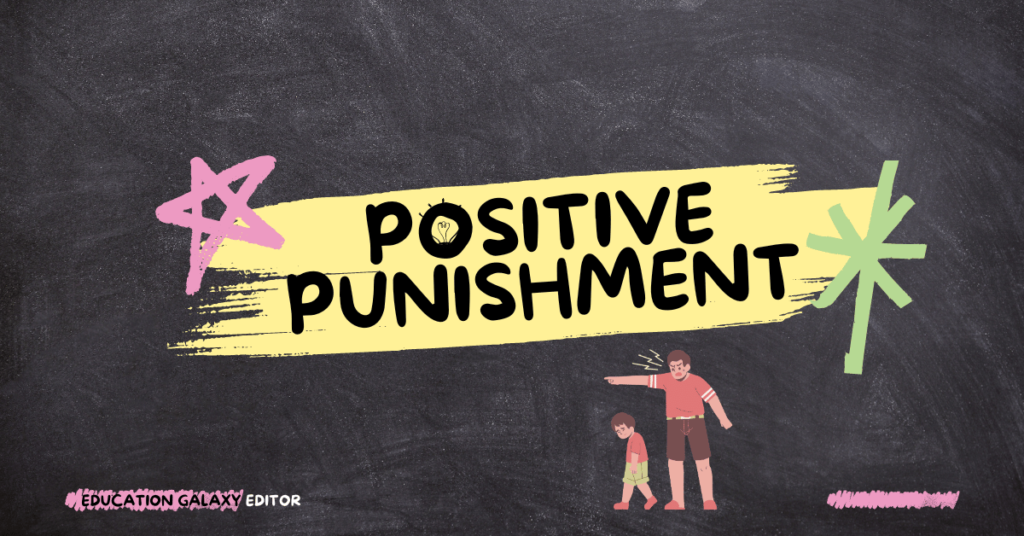Behavioral Psychology Examples
Behavioral Psychology Examples studies observable behavior and how environmental factors influence it. It is based on the idea that all behaviors are learned and can be changed. There are many different types of behavioral psychology examples, but some of the most common include:
Read More Articles:
Edustaff Login: Empowering Educational Excellence Through Enhanced Workflows and Communication
Cognitive Learning: Exploring the Mental Processes of Knowledge Acquisition
What Is Post-Secondary Education: A Multifaceted Exploration
Classical Conditioning: 
Classical conditioning is a type of learning in which a neutral stimulus becomes associated with a meaningful stimulus, leading to a conditioned response. Ivan Pavlov first studied it in his famous experiment with dogs, where he paired the sound of a bell with food presentation. After several pairings, the dogs began to salivate at the sound of the bell, even without food.
Components of Classical Conditioning:
- Unconditioned stimulus (U.S.): A naturally occurring stimulus that triggers an unconditioned response.
- Unconditioned response (U.R.): A natural, reflexive response to an unconditioned stimulus.
- Conditioned stimulus (C.S.): A neutral stimulus that eventually triggers a conditioned response after being paired with an unconditioned stimulus.
- Conditioned response (C.R.): A learned response to a conditioned stimulus.
Steps in Classical Conditioning:
- Presentation of the unconditioned stimulus (U.S.) triggers an unconditioned response (U.R.).
- A neutral stimulus (C.S.) is repeatedly paired with the unconditioned stimulus (U.S.).
- After several pairings, the neutral stimulus (now the conditioned stimulus or C.S.) can elicit a conditioned response (C.R.).
Applications of Classical Conditioning:
Fear conditioning: Classical conditioning can be used to explain how fears are acquired. For example, a person whom a dog has bitten may develop a fear of dogs.
Advertising: Classical conditioning creates associations between products and positive emotions or experiences.
Phobia treatment: Classical conditioning techniques can be used to treat phobias, such as fear of flying or fear of spiders.
Limitations of Classical Conditioning:
- It is more effective for simple and reflexive behaviors.
- It does not explain all types of learning, especially those involving complex cognitive processes.
- It can lead to overgeneralization, where the conditioned response is elicited by similar but not identical stimuli.
Examples of Classical Conditioning:
- A baby cries at the sound of a vacuum cleaner after repeatedly hearing it during diaper changes.
- A dog salivating at the sound of food can open after learning that it signals mealtime.
- A student is feeling anxious before a test after associating the classroom with previous stressful test-taking experiences.
Classical conditioning plays a significant role in shaping our behaviors, emotions, and responses to environmental stimuli. Understanding its principles provides insights into how learning occurs and can be applied in various contexts.
Operant Conditioning
Operant conditioning, also known as instrumental conditioning, is a type of learning in which the probability of a behavior is increased or decreased based on its consequences. B.F. developed it. Skinner believed behavior is shaped by its consequences rather than internal mental processes.
Principles of Operant Conditioning:
- Positive reinforcement: A desirable stimulus is added after a behavior, increasing the likelihood of that behavior being repeated.
- Negative reinforcement: After a behavior, an undesirable stimulus is removed, increasing the likelihood of that behavior being repeated.
- Positive punishment: After a behavior, an undesirable stimulus is added, decreasing the likelihood of that behavior being repeated.
- Negative punishment: After a behavior, a desirable stimulus is removed, decreasing the likelihood of that behavior being repeated.
Steps in Operant Conditioning:
- Antecedent: The situation or event that triggers the behavior.
- Behavior: The specific action performed by the individual.
- Consequence: The event that follows the behavior and either reinforces or punishes it.
Applications of Operant Conditioning:
- Education: Shaping desired behaviors in children and students through rewards and consequences.
- Workplace: Motivating employees by providing rewards for productivity and performance.
- Animal training: Animals are trained to perform specific behaviors using positive reinforcement and negative punishment.
- Behavior modification: Changing problematic behaviors in individuals by using reinforcement and punishment techniques.
Limitations of Operant Conditioning:
- Ethical concerns: Punishment can raise ethical concerns, especially when used on children or animals.
- Limited effectiveness: Operant conditioning may not be effective for all behaviors, particularly those influenced by complex cognitive processes.
- Overreliance on external rewards: Continuous reinforcement can lead to a dependency on external rewards, reducing intrinsic motivation.
Examples of Operant Conditioning:
- A child is receiving praise (positive reinforcement) for completing their homework.
- Employees receive a bonus (positive reinforcement) for exceeding sales targets.
- A dog is given a treat (positive reinforcement) for sitting on command.
- A student being grounded (negative punishment) for skipping school.
Operant conditioning is a widely used technique for shaping behavior and promoting desired outcomes. By understanding its principles, we can effectively modify behaviors in various settings and improve the quality of life for individuals and society.
Positive Reinforcement: 
Definition: Positive reinforcement is used in operant conditioning in which a desirable stimulus is added after a behavior, increasing the likelihood of that behavior being repeated. Introducing the positive reinforcer strengthens the association between the behavior and its positive consequence.
Mechanism: Positive reinforcement increases the frequency of a desired behavior by making it more rewarding for the individual performing it. When a positive consequence follows a behavior, the individual is more likely to engage in that behavior again to experience the reward.
Types of Positive Reinforcers:
- Tangible reinforcers: Physical objects or items, such as treats, toys, or money.
- Social reinforcers: Positive attention, praise, or compliments from others.
- Privileges and activities: Access to preferred activities, such as screen time, special outings, or choices.
- Tokens and points: Symbolic representations of positive reinforcement that can be exchanged for rewards later.
Applications: Positive reinforcement is widely used in various settings, including:
- Education: Rewarding students for completing assignments, participating in class, and demonstrating positive behavior.
- Workplace: Recognizing and rewarding employees for productivity, teamwork, and achieving goals.
- Animal training: Animals are trained to perform desired behaviors by providing treats or praise.
- Behavior modification: Changing problematic behaviors by introducing positive consequences for desired behaviors.
Advantages:
- Effective: Positive reinforcement is generally an effective method for increasing desired behaviors.
- Motivating: Rewards can act as incentives and inspire individuals to perform desired behaviors.
- Builds self-esteem: Positive reinforcement encourages individuals and provides a sense of accomplishment, which can boost their self-esteem.
Limitations:
- Temporary: The effects of positive reinforcement may fade over time if the reinforcer is not consistently provided.
- Can lead to dependency: Continuous reinforcement can make individuals reliant on external rewards, reducing intrinsic motivation.
- Ethical considerations: Positive reinforcement should be moral and not exploitative.
Examples:
- A child receives a sticker for completing a chore.
- An employee is earning a bonus for exceeding sales targets.
- A dog is being given a treat for sitting on command.
- A student is being praised by their teacher for participating in class.
Positive reinforcement is a powerful technique for shaping behavior and promoting desired outcomes. By understanding its principles and using it ethically, we can effectively modify behaviors and improve the quality of life for individuals and society.
Negative Reinforcement:
Definition: Negative reinforcement occurs when an unpleasant or aversive stimulus is removed or avoided after a behavior, increasing the likelihood of that behavior being repeated. In negative reinforcement, eliminating or avoiding the negative consequence strengthens the association between the behavior and its positive outcome.
Mechanism: Unlike positive reinforcement, which involves adding a desirable stimulus, negative reinforcement eliminates or reduces an unpleasant or undesired stimulus. This makes the behavior more likely to be repeated to prevent or escape the negative outcome.
Types of Negative Reinforcers:
- Escape: Removing an ongoing aversive stimulus after a behavior.
- Avoidance: Preventing an anticipated aversive stimulus from occurring after a behavior.
Applications: Negative reinforcement is used in various settings, including:
- Education: Giving students breaks from challenging tasks as a reward for completing assignments.
- Workplace: Offering flexible work arrangements to employees to increase job satisfaction and reduce stress.
- Animal training involves training animals to avoid unwanted behaviors by providing a mild punishment, such as a water spray.
- Behavior modification: Reducing problematic behaviors by removing or avoiding unpleasant consequences associated with those behaviors.
Advantages:
- Effective: Negative reinforcement can be effective in increasing desired behaviors by making them instrumental in escaping or avoiding unpleasant situations.
- Motivating: The prospect of reducing or avoiding negative consequences can be a strong motivator for individuals to perform desired behaviors.
- Long-lasting: Negative reinforcement’s effects can be longer-lasting than positive reinforcement’s, as the avoidance of discomfort drives it.
Limitations:
- Ethical concerns: Negative reinforcement, especially when involving punishment, can raise ethical concerns about coercion and potential harm.
- May suppress other behaviors: Focusing on avoiding negative consequences can suppress other desirable behaviors.
- Can create dependency: Continuous negative reinforcement may develop a dependency on avoiding unpleasant situations, reducing intrinsic motivation.
Examples:
- A child cleaning their room to avoid being grounded.
- An employee works overtime to avoid criticism from their boss.
- A person taking medication to relieve pain or discomfort.
- A student is studying hard to avoid failing an exam.
Overall, negative reinforcement can be useful for increasing desired behaviors, especially when positive reinforcement is not feasible or effective. However, using negative reinforcement ethically and with other positive reinforcement strategies is essential to promote healthy and balanced behavior change.
Positive Punishment: Behavioral Psychology Examples
Definition: Positive punishment is an operant conditioning technique that involves presenting an aversive or undesirable stimulus after a behavior to decrease the likelihood of that behavior being repeated. Introducing the negative consequence strengthens the association between the behavior and its undesirable outcome.
Mechanism: Positive punishment works by making the consequences of a behavior unpleasant or painful, discouraging individuals from engaging in that behavior again. The aversive stimulus serves as a deterrent, reducing the frequency of the undesired behavior.
Types of Positive Punishers:
- Physical punishment: Inflicting physical pain or discomfort, such as spanking or electric shocks.
- Verbal punishment: Using harsh words, insults, or threats to express disapproval.
- Social punishment: Excluding or isolating an individual from social interactions or activities.
- Loss of privileges: Removing access to desired activities or possessions.
Applications: Positive punishment is sometimes used in settings such as:
- Discipline: Punishing children for misbehavior to deter future transgressions.
- Animal training: Using physical or verbal punishment to correct unwanted animal behaviors.
- Crime prevention: Implementing punishments, such as fines or imprisonment, to discourage criminal activities.
Advantages:
- Immediate impact: Positive punishment can have an immediate effect in suppressing undesired behaviors.
- Deterrence: The threat of punishment can act as a deterrent, preventing individuals from engaging in certain behaviors.
- Control: Punishment can provide a means of controlling behavior, especially when other methods are ineffective.
Limitations:
- Ethical concerns: Positive punishment, particularly physical punishment, raises ethical concerns about potential harm and abuse.
- May suppress other behaviors: Punishment can lead to suppressing other desirable behaviors due to fear or anxiety.
- Excessive or harsh punishment can create negative emotions toward the punisher, such as fear and resentment.
- Ineffective for complex behaviors: Punishment may not be effective in changing complex behaviors influenced by multiple factors.
Examples:
- A child being grounded for breaking curfew.
- An employee receiving a written reprimand for poor performance.
- A dog is being sprayed with water to jump on furniture.
- A criminal being sentenced to prison for theft.
Positive punishment can be a controversial technique in behavior modification due to its potential negative consequences. While it may immediately suppress undesired behaviors, it should be used cautiously and with positive reinforcement strategies to promote long-term and healthy behavior change.
Negative Punishment: Behavioral Psychology Examples
Negative punishment is operant conditioning, in which a positive reinforcer is removed after a behavior occurs. This makes the behavior less likely to happen again in the future.
For example, if a child misbehaves, their parent might take away a toy or privilege. This is Negative punishment because it removes something that the child enjoys.
Negative punishment differs from positive punishment, which involves adding a negative reinforcer after a behavior occurs. For example, if a child misbehaves, their parent might spank or give them a time-out. This is positive punishment because it adds something that the child dislikes.
Negative punishment can effectively change behavior, but it is important to use it correctly. If negative punishment is used too often or too harshly, it can lead to negative side effects, such as aggression, withdrawal, and anxiety.
Here are some examples of negative punishment:
- Taking away a toy or privilege after a child misbehaves
- Grounding a teenager after they break curfew
- Suspending a student from school after they fight with another student
- Firing an employee after they make a serious mistake
Negative punishment can effectively change behavior, but it is important to use it correctly. It should only be used when other methods, such as positive reinforcement, have not been successful. Negative punishment should also be used with positive reinforcement to help the person learn desired behaviors.
FAQ: Behavioral Psychology Examples
What is behavioral psychology?
Behavioral psychology is a school of psychology that focuses on observable, measurable behavior. Behavioral psychologists believe all behavior is learned and can be changed through conditioning.
What are the different types of conditioning?
The two most common types of conditioning are classical conditioning and operant conditioning.
- Classical conditioning is a type of learning that occurs when two stimuli are paired. Over time, the response to one stimulus will become the response to the other.
- Operant conditioning is a type of learning that occurs when a consequence follows a behavior. The result can be positive (e.g., a reward) or negative (e.g., a punishment).
How is behavioral psychology used in the real world?
Behavioral psychology has been used to develop effective treatments for a wide range of problems, including:
- Aggression
- Addiction
- Anxiety
- Autism
- Bedwetting
- Eating disorders
- Phobias
- Stuttering
- Toilet training
What are the limitations of behavioral psychology?
One limitation of behavioral psychology is that it does not consider cognitive processes, such as thoughts and feelings. This can make it difficult to understand and change complex behaviors, such as those that are motivated by anxiety or depression.
Another limitation of behavioral psychology is that it can be difficult to apply in real-world settings. For example, controlling all variables that might influence behavior in a classroom or workplace setting can be easy.
Despite these limitations, behavioral psychology remains a valuable tool for understanding and changing behavior.
Conclusion
Behavioral psychology is a powerful tool that can be used to understand and change behavior. It has been used to develop effective treatments for various problems and is a valuable tool for psychologists today.
One of the strengths of behavioral psychology is its focus on observable, measurable behavior. This makes it possible to study behavior scientifically and develop effective interventions to change behavior.
Another strength of behavioral psychology is its emphasis on learning. Behavioral psychologists believe that all behavior is learned and can be changed. This is a hopeful message, as it means that people can improve their behavior, no matter their past experiences.
Of course, behavioral psychology is not without its limitations. One limitation is that cognitive processes, such as thoughts and feelings, must be considered. This can make it difficult to understand and change complex behaviors, such as those that are motivated by anxiety or depression.
Another limitation of behavioral psychology is that it can be difficult to apply in real-world settings. For example, controlling all variables that might influence behavior in a classroom or workplace setting can be difficult.
Despite these limitations, behavioral psychology remains a valuable tool for understanding and changing behavior. It has been used to develop effective treatments for various problems and is a useful tool for psychologists today.



